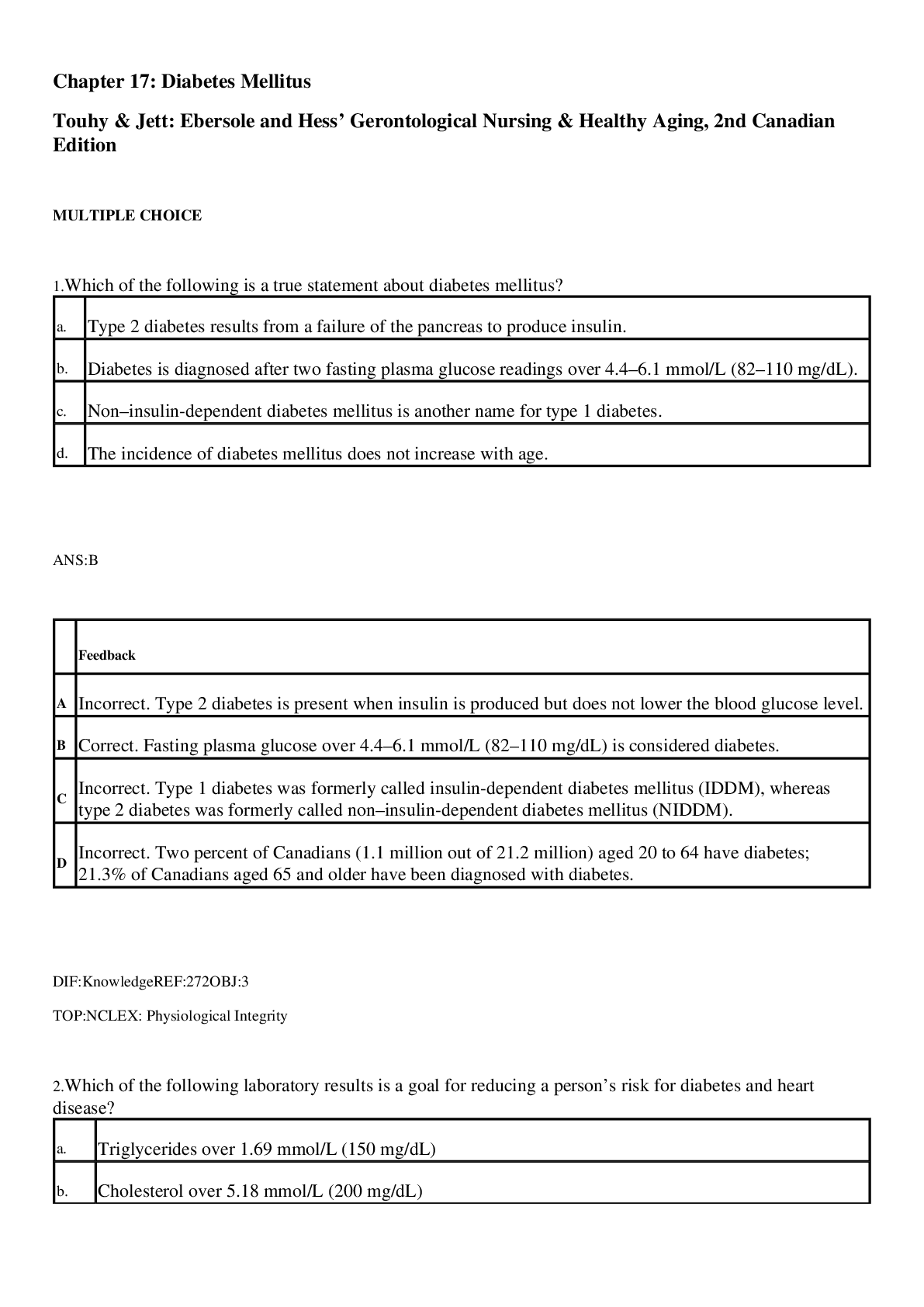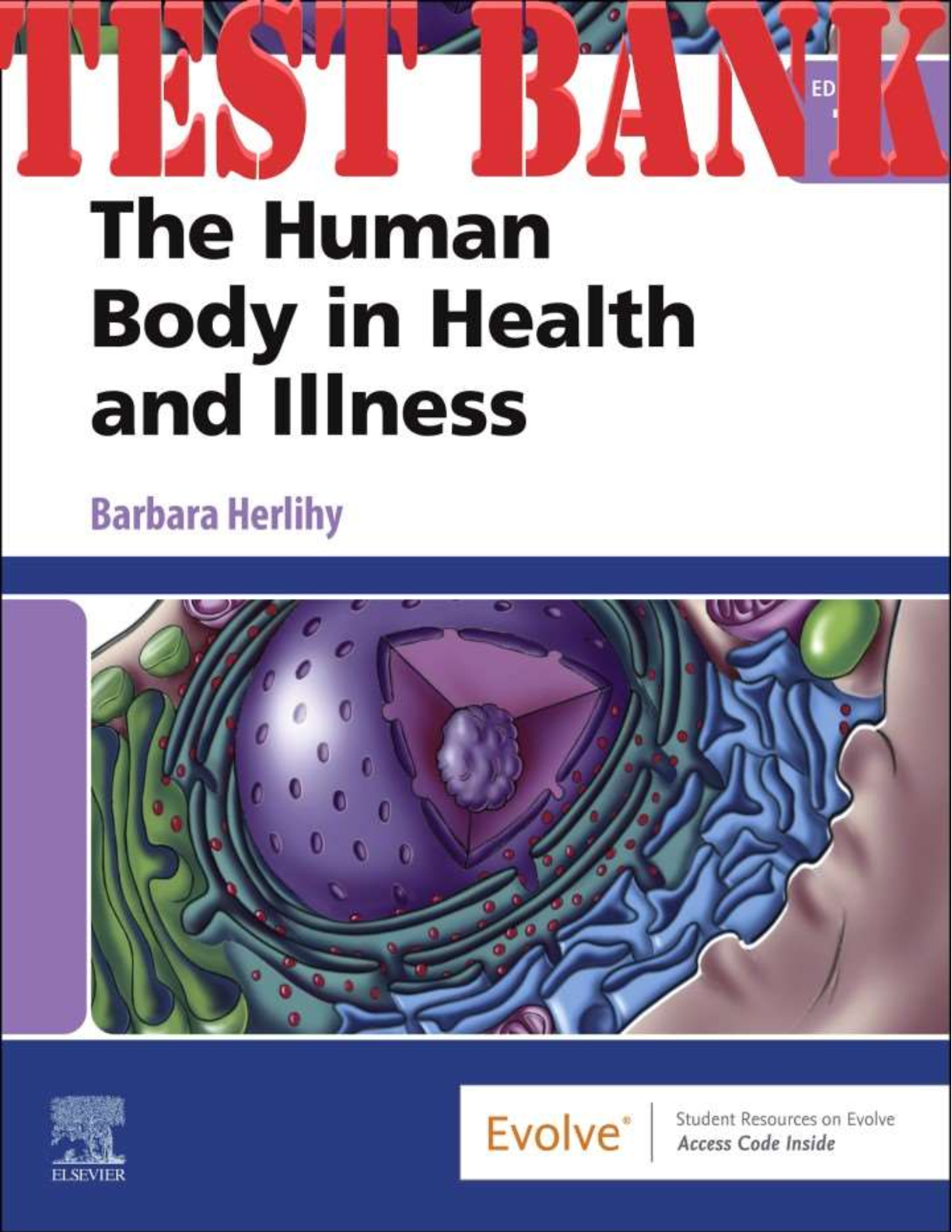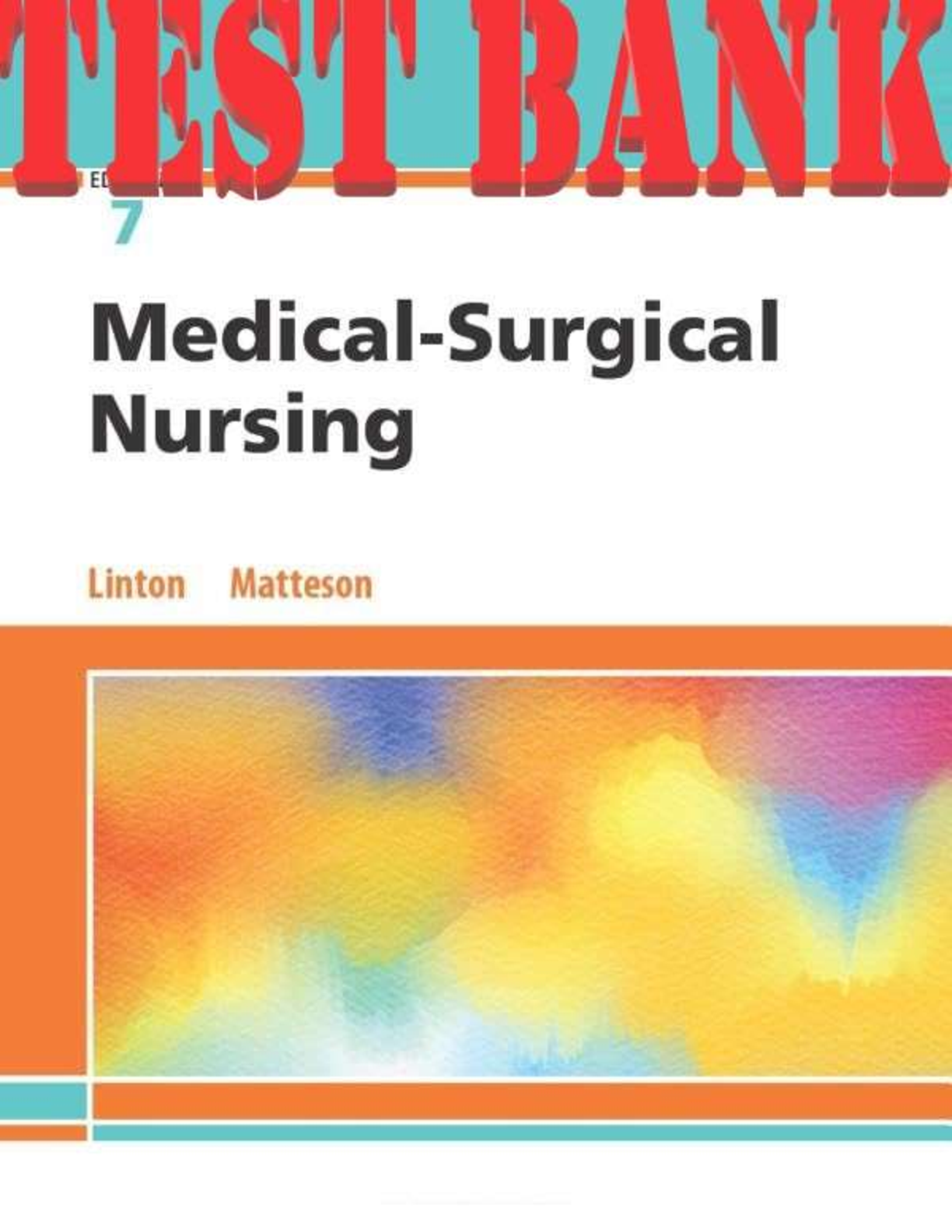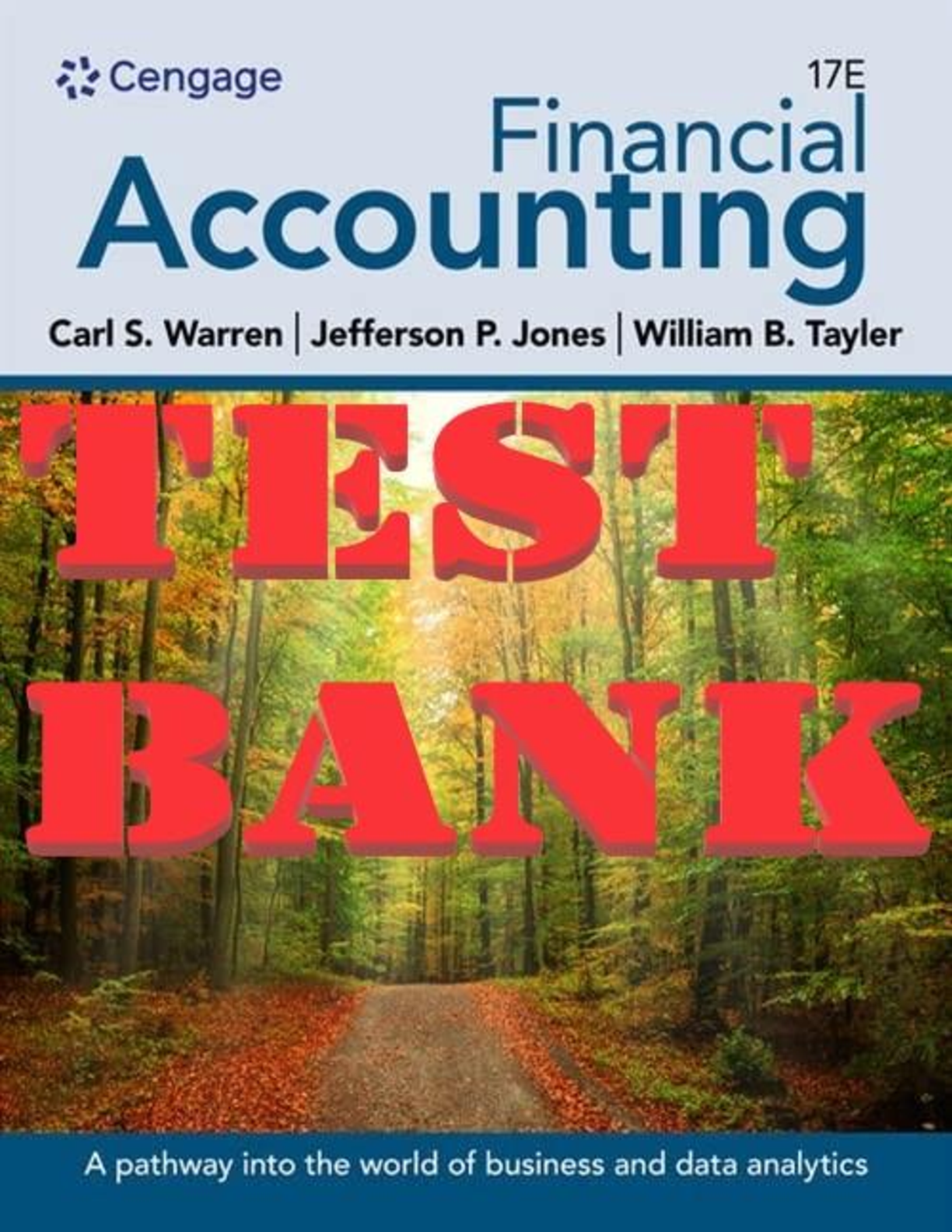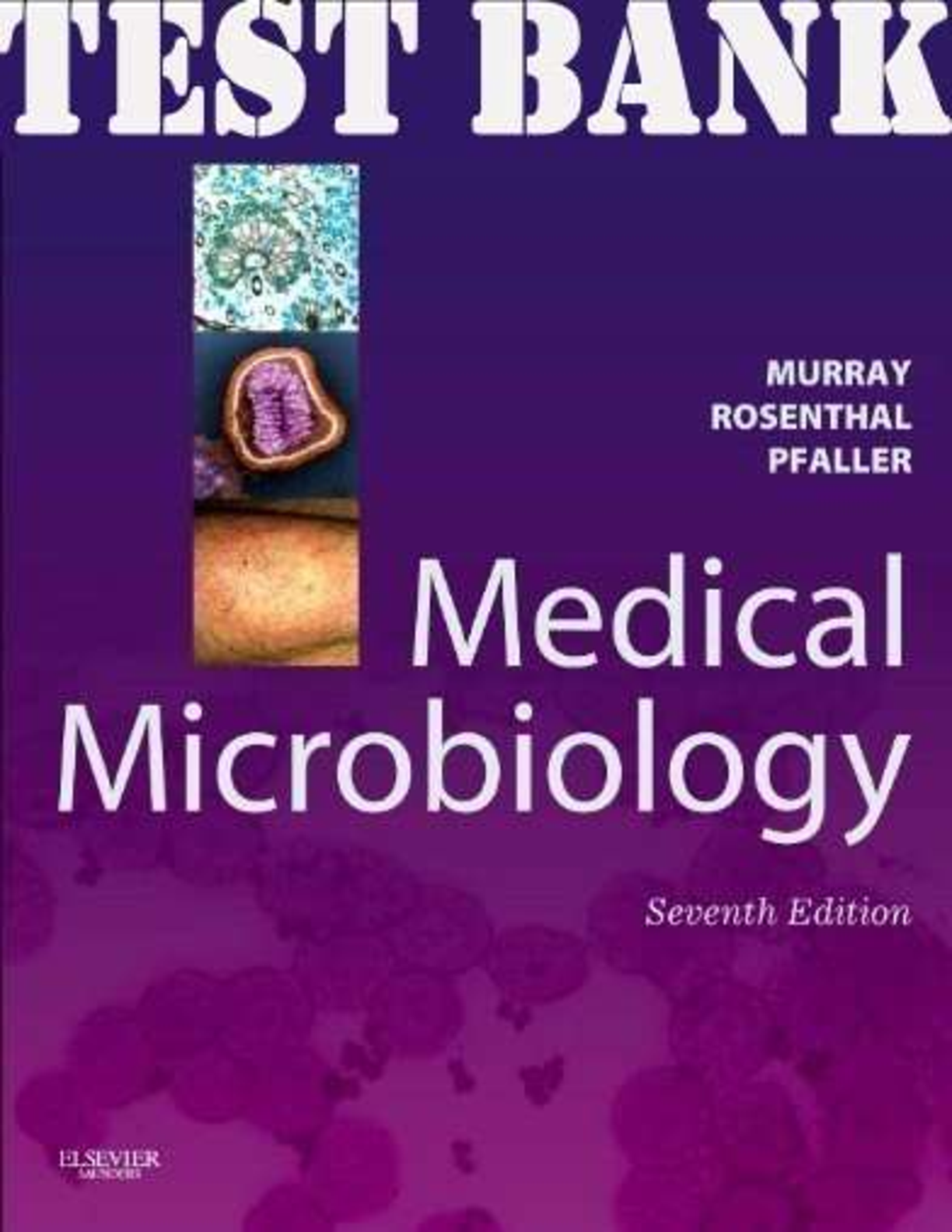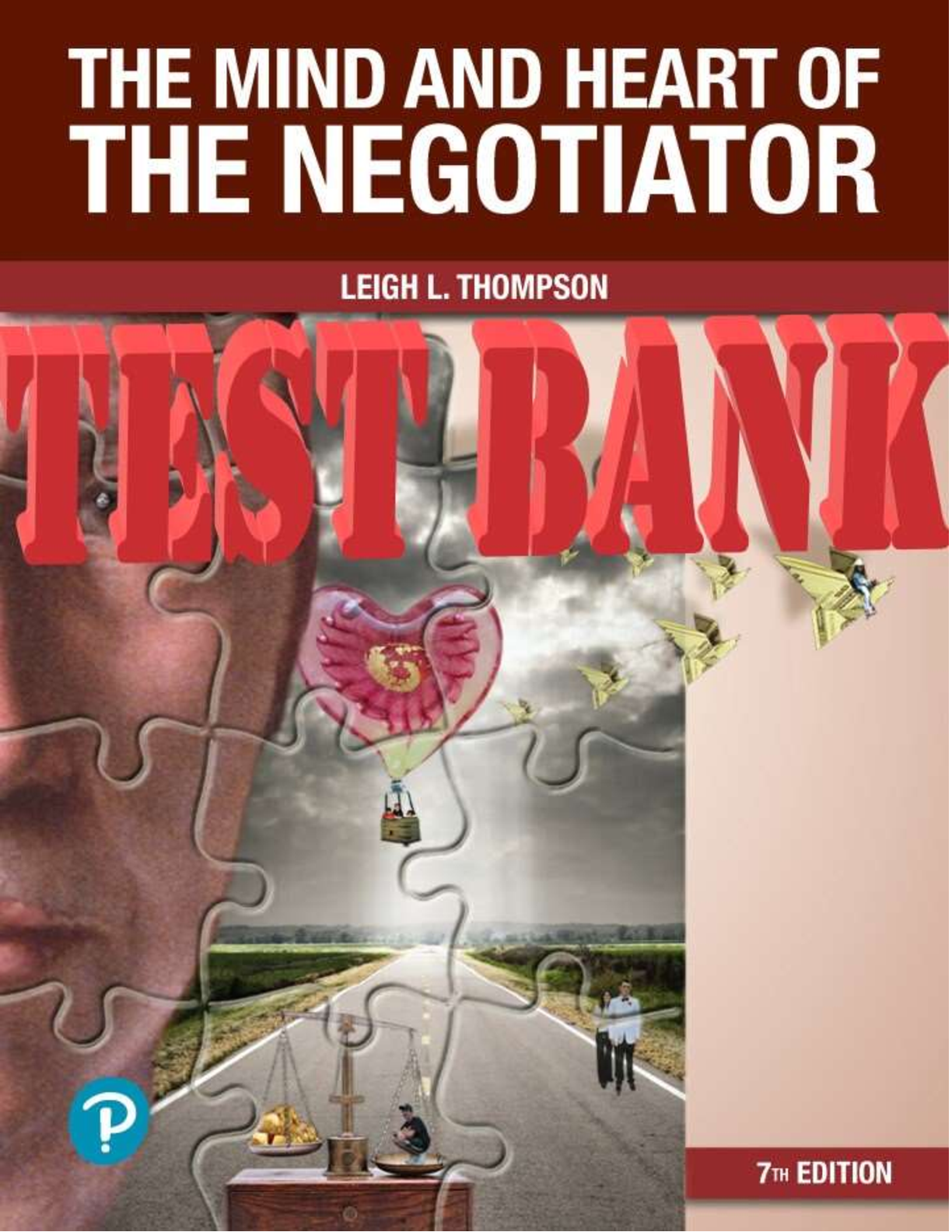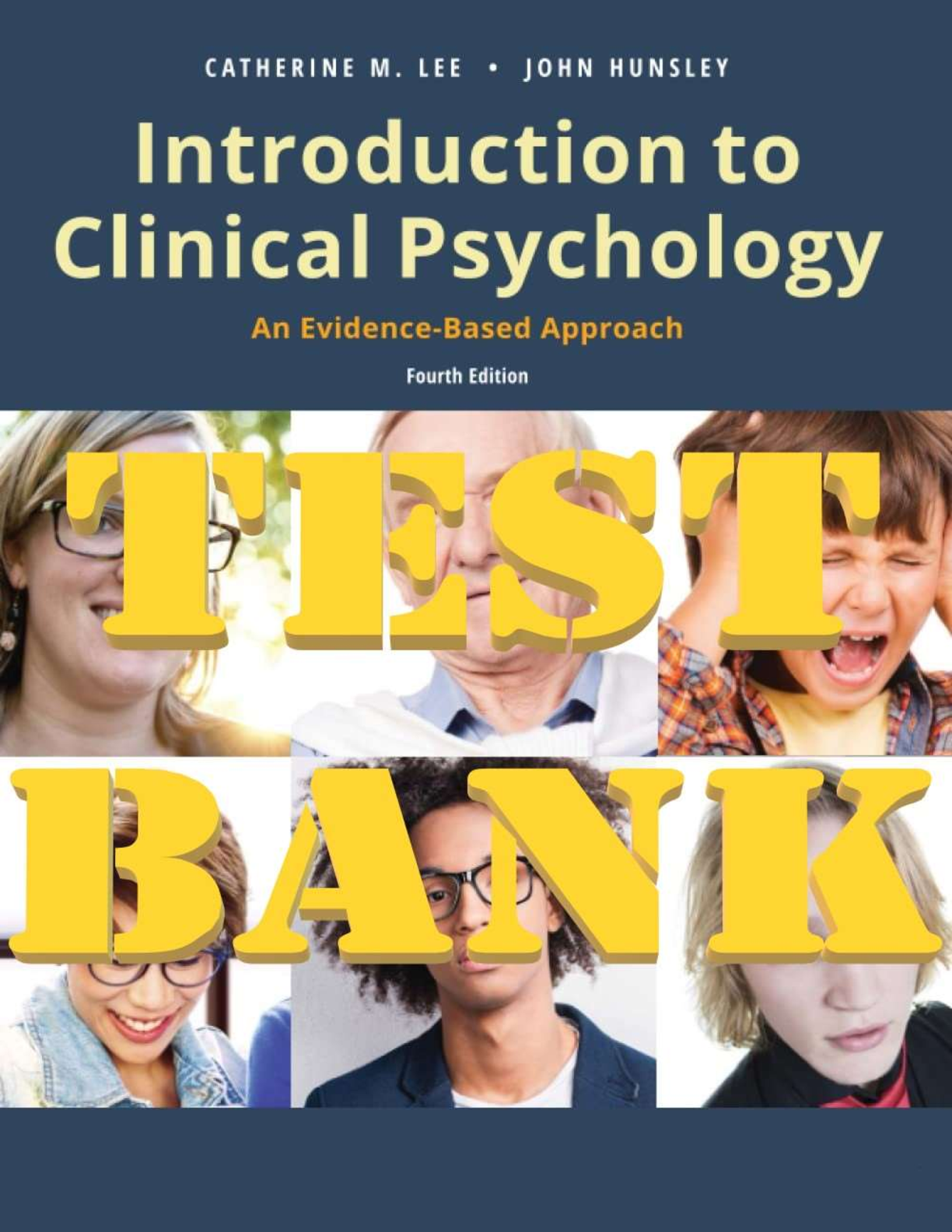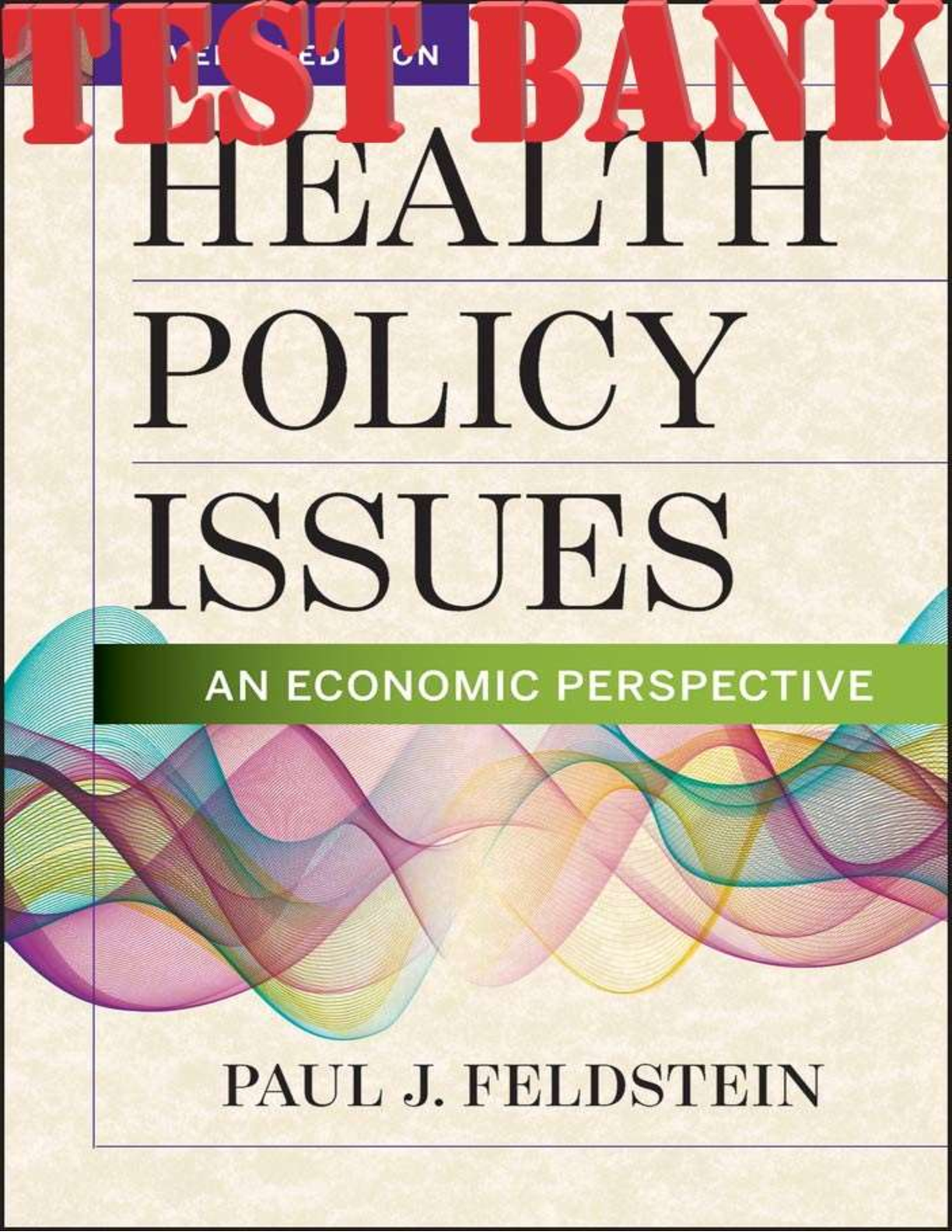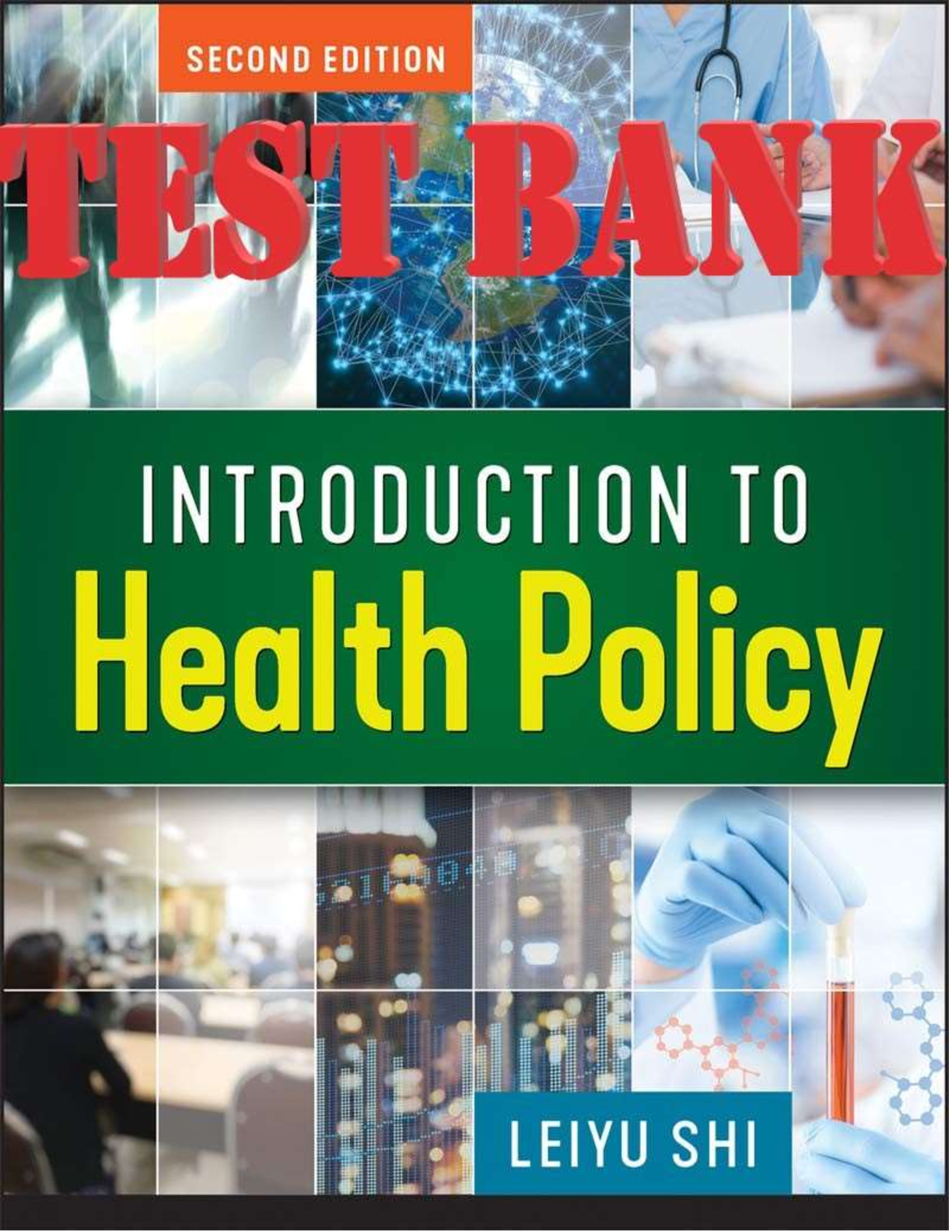*NURSING > TEST BANK > TEST BANK FOR INTRODUCTION TO CRITICAL CARE NURSING 7TH EDITION BY SOLE"Chapter 11: Organ Donation (All)
TEST BANK FOR INTRODUCTION TO CRITICAL CARE NURSING 7TH EDITION BY SOLE"Chapter 11: Organ Donation
Document Content and Description Below
Chapter 11: Organ Donation Sole: Introduction to Critical Care Nursing, 7th Edition MULTIPLE CHOICE 1. The nurse is caring for a patient who has a Glasgow Coma Scale (GCS) score of 3. D... iscussions have been held with the family about withdrawing life support. Which statement by the nurse best describes requirements that must be met to sustain Centers for Medicare and Medicaid Services (CMS) Conditions of Participation? a. “I need to notify the local Organ Procurement Organization of my patient’s impending death.” b. “I will contact the provider to obtain informed consent for organ donation.” c. “The charge nurse will notify the local Organ Procurement Organization once the patient has been pronounced brain dead.” d. “I need the physician to evaluate my patient’s suitability for organ donation.” ANS: A Hospitals that receive Medicare or Medicaid reimbursement must notify the local OPO in cases of impending death. It is the responsibility of the organ procurement organization, not the provider, to obtain family consent for organ donation and to evaluate the patient for potential suitability as a donor. Notification of the organ procurement organization must occur before death, not after the patient has been pronounced dead. DIF: Cognitive Level: Understand/Comprehension REF: p. 233 OBJ: Discuss processes associated with organ donation. TOP: Nursing Process Step: ImplementationNURSINGTB.COM MSC: NCLEX Client Needs Category: Safe and Effective Care Environment 2. The nurse is managing a donor patient six hours before the scheduled harvesting of the patient’s organs. Which assessment finding requires immediate action by the nurse? a. Morning serum blood glucose of 128 mg/dL b. pH 7.30; PaCO2 38 mm Hg; HCO3 16 mEq/L c. Pulmonary artery temperature of 97.8° F d. Central venous pressure of 8 mm Hg ANS: B Donor management focuses on maintaining hemodynamic stability and normal laboratory parameters. Standardized order sets are usually used, and they focus on preserving organ function and viability. Immediate action is required for an arterial blood gas value of pH 7.30; PaCO2 38 mmHg; HCO3 16 mEq/L. The finding indicates metabolic acidosis. All other values are within normal limits. DIF: Cognitive Level: Analyze/Analysis REF: p. 239 OBJ: Describe clinical triggers associated with brain death. TOP: Nursing Process Step: Implementation MSC: NCLEX Client Needs Category: Safe and Effective Care Environment 3. The charge nurse is reviewing the status of patients in the critical care unit. Regarding which patient should the nurse notify the organ procurement organization to evaluate for possible organ donation? a. A 36-year-old patient with a Glasgow Coma Scale score of 3 with no activity on electroencephalogram b. A 68-year-old patient admitted with unstable atrial fibrillation who has suffered a stroke c. A 40-year-old brain-injured patient with a history of ovarian cancer and a Glasgow Coma Scale score of 7 d. A 53-year-old diabetic with a history of unstable angina status postresuscitation ANS: A A patient with a GCS score of 3 and no activity on EEG is facing impending death. The OPO should be notified. There are no indications of impending death in any of the other patient scenarios. DIF: Cognitive Level: Apply/Application REF: Table 11-4 OBJ: Discuss processes associated with organ donation. TOP: Nursing Process Step: Assessment MSC: NCLEX Client Needs Category: Safe and Effective Care Environment 4. The transplant clinic coordinator is evaluating relatives of a patient with end-stage renal disease, whose blood type is A positive, for suitability as a living donor for kidney transplantation. Which family member best qualifies for evaluation? a. A 65-year-old brother with a history of hypertension; blood type A positive b. A 35-year-old female with a history of food allergies; blood type O negative c. A 14-year-old son, otherwise healthy with no history; blood type B negative NURSINGTB.COM d. A 70-year-old mother, with a history of sinus infections; blood type A positive ANS: B To qualify as a living donor, an individual must be free from hypertension, diabetes, cancer, kidney disease, and heart disease and generally between 18 and 60 years of age. A 35-year-old female with a history of food allergies and a blood type of O negative (universal donor) best qualifies for evaluation. The brother and mother, although blood-type compatible, are outside acceptable age ranges for living donation. The minor son does not qualify based on blood type. DIF: Cognitive Level: Apply/Application REF: p. 239 OBJ: Discuss processes associated with organ donation. TOP: Nursing Process Step: Assessment MSC: NCLEX Client Needs Category: Physiological Adaptation 5. The nurse is caring for a patient who is being evaluated clinically for brain death. Which assessment finding supports brain death? a. Absence of a corneal reflex b. Unequal, reactive pupils c. Withdrawal from painful stimuli d. Core temperature of 100.8° F ANS: A Absence of a corneal reflex indicates altered brainstem activity and is a component used in the clinical evaluation of brain death. Reactive pupils, withdrawal reaction to painful stimuli, and the ability to maintain core temperature indicate brainstem activity. DIF: Cognitive Level: Understand/Comprehension REF: Table 11-3 OBJ: Describe clinical triggers associated with brain death. TOP: Nursing Process Step: Assessment MSC: NCLEX Client Needs Category: Physiological Integrity—Physiological Adaptation [Show More]
Last updated: 1 year ago
Preview 1 out of 13 pages

Buy this document to get the full access instantly
Instant Download Access after purchase
Add to cartInstant download
We Accept:

Reviews( 0 )
$4.50
Document information
Connected school, study & course
About the document
Uploaded On
Feb 28, 2021
Number of pages
13
Written in
Additional information
This document has been written for:
Uploaded
Feb 28, 2021
Downloads
0
Views
56



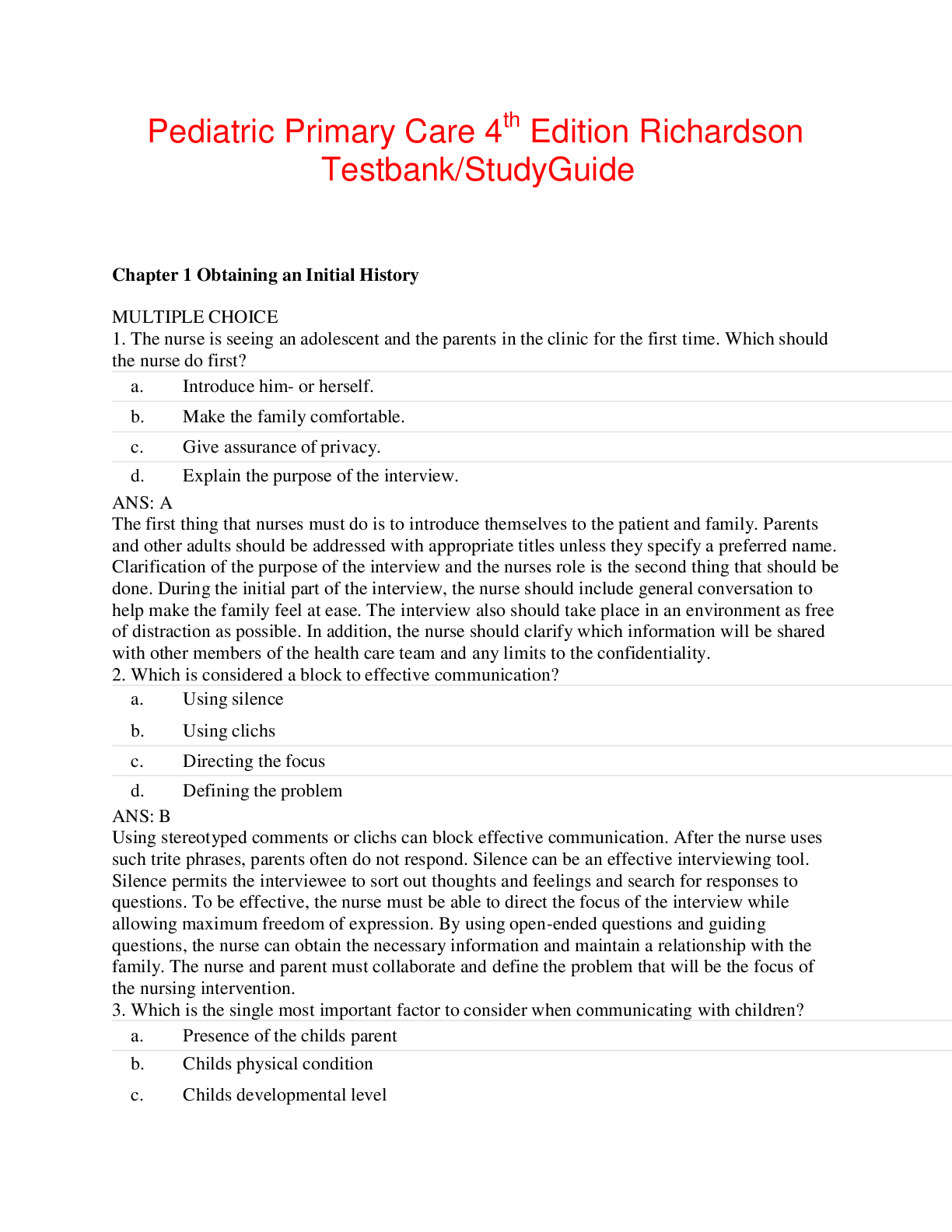

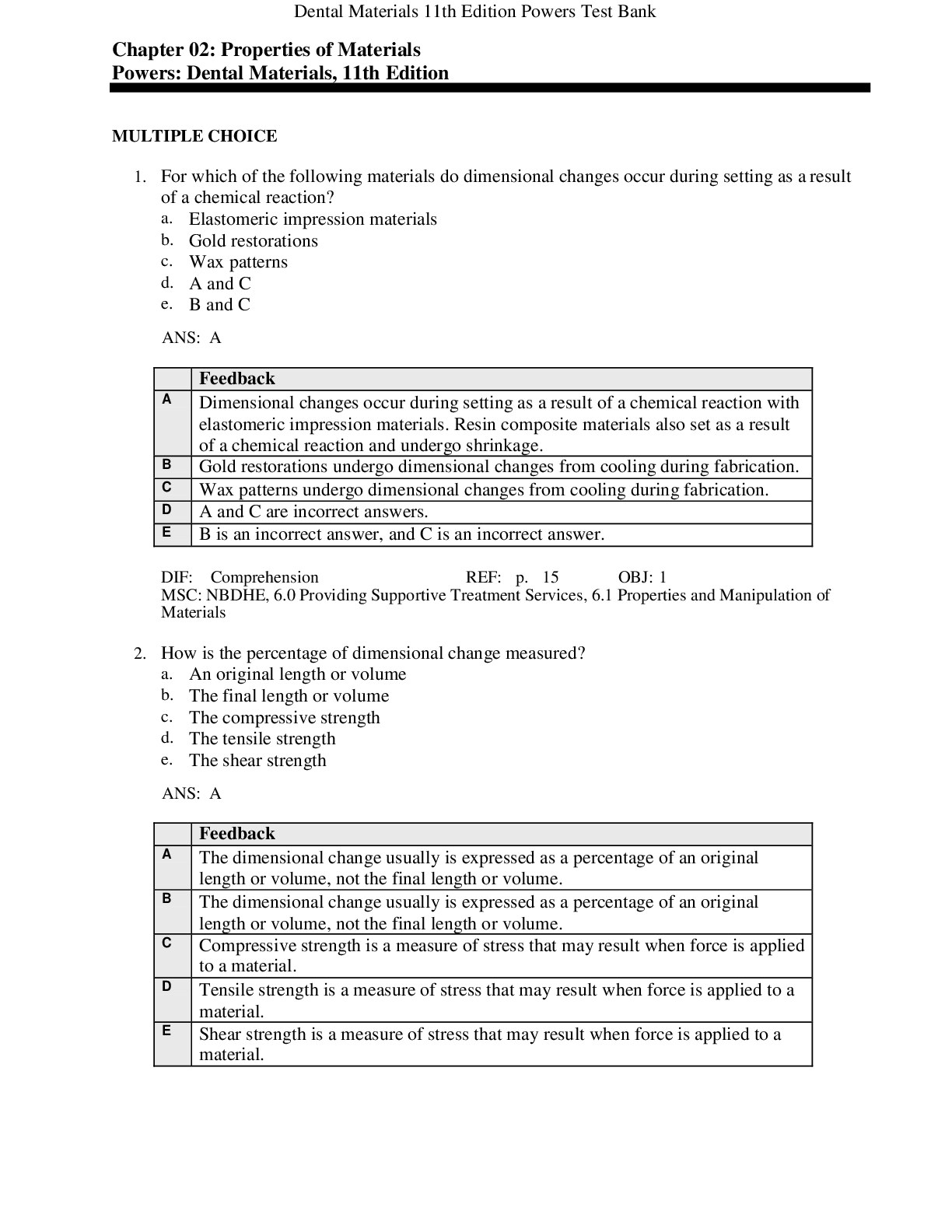
.png)
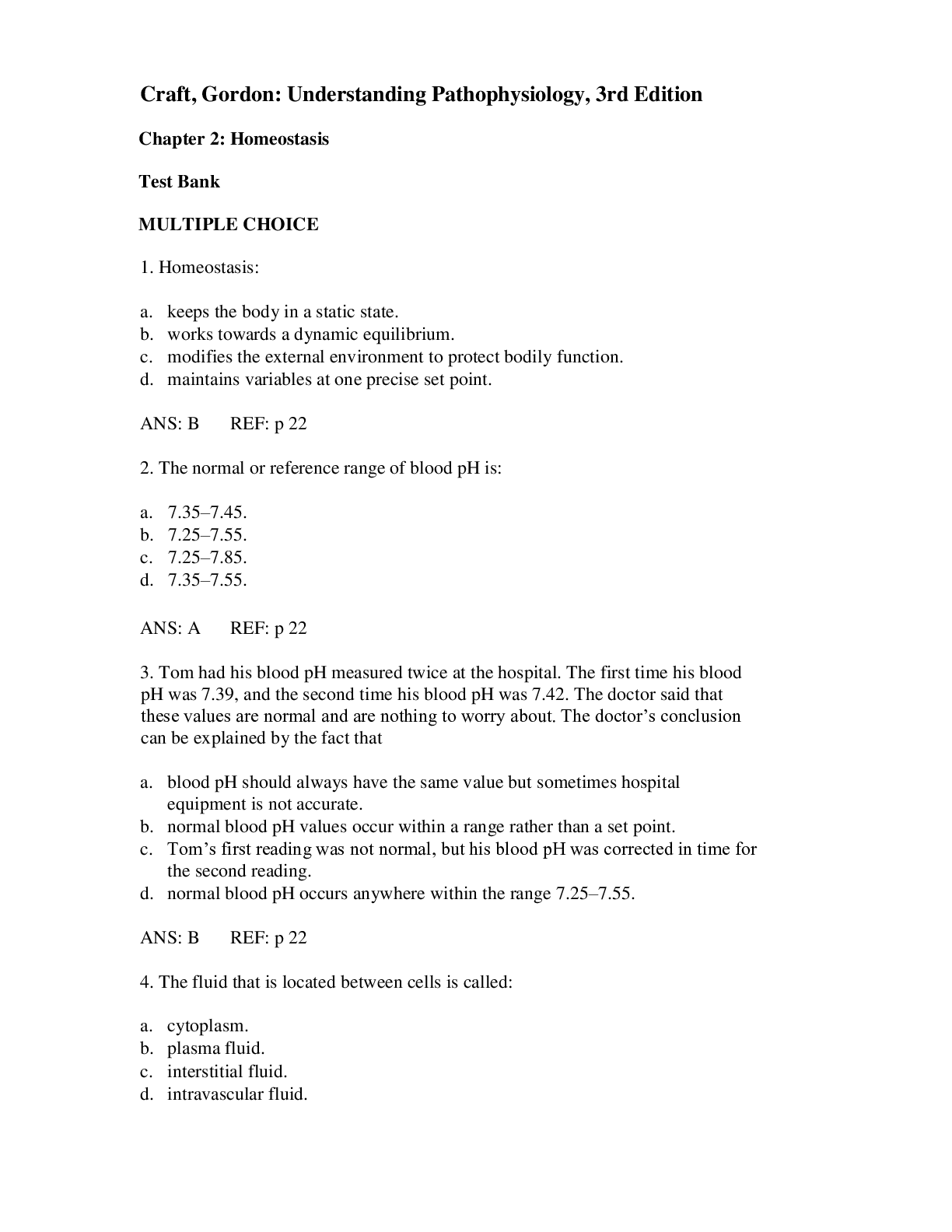



.png)
.png)
